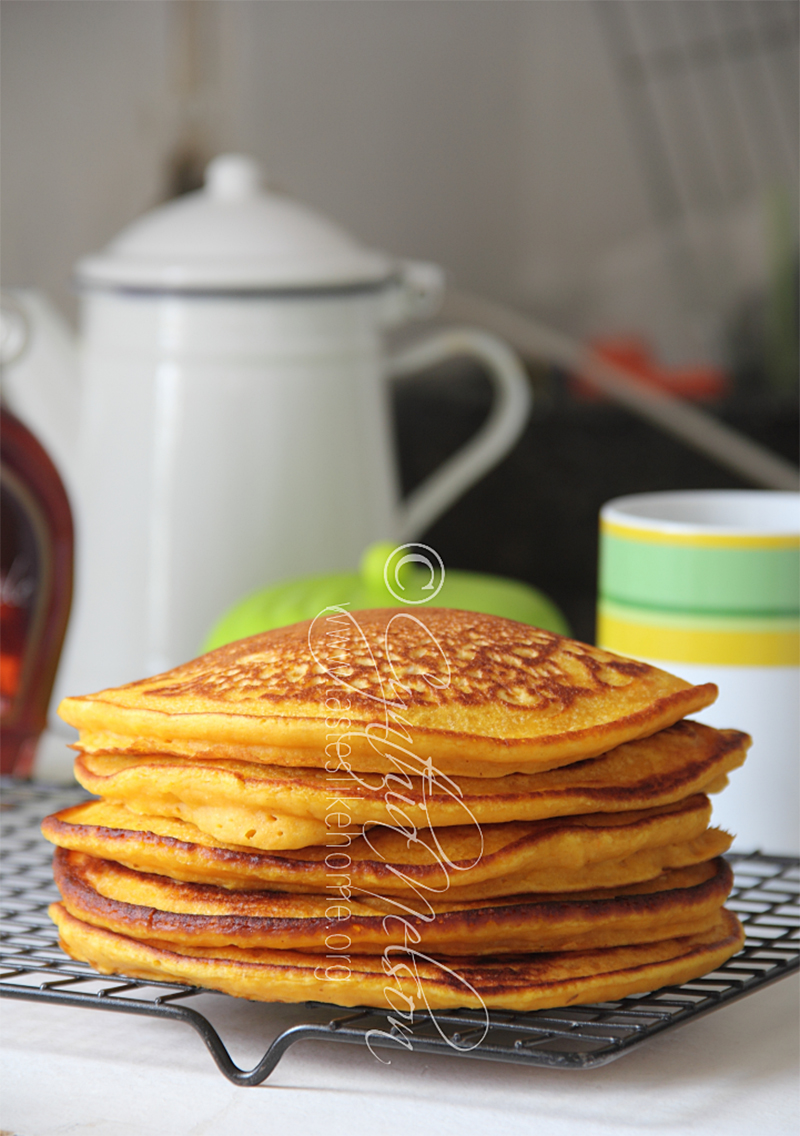
I grew up eating Portuguese-style pancakes and that’s the type I make on Shrove Tuesday – the day before Ash Wednesday. For me it is a combination of nostalgia and tradition.
We’d race home from school in the afternoon, the sun still high in the sky. The kitchen window curtain pulled, offering shade, creating the perfect warm atmosphere for the yeasted batter to rise before being dropped as balls to be fried. The saucepan of homemade syrup, still warm, sat on a back burner, a couple of cinnamon sticks languishing in sweet goodness after releasing their flavour.

We’d still have to wait, but not for long. Soon Mommy would set the karahi on the stove, pour oil into it to deep fry the batter, and we would be eating the pancakes like we had been starved for days. Mommy would serve us the pancakes in little bowls with syrup drizzled over the brown soft puffy balls. But you know what, she never poured enough syrup man! (lol) We were always wanting more syrup. I think it was a control thing, she wanted to manage the sugar high. After we had our fill, it would be time to work off some energy, dropping off pancakes and syrup to family friends. As we delivered, we also picked up. I liked the tradition of the sharing of pancakes.
While many continue to make the fried pancakes, most people find it easier and prefer to make the flat pancakes. Here are some tips/suggestions for making them.
1. Let the ingredients be at room temperature – it improves the texture of the finished pancake and makes mixing easier too.
2. Separately mix the dry ingredients and the wet ingredients, then bring the two together, this way, you will not overmix the batter, you do not want to develop a lot of gluten. Over mixing the batter will cause the pancakes to be somewhat gummy when cooked.
3. Once mixed, pancakes can be made right away, however, letting it rest for at least 20 minutes really improves the texture and gives the batter a chance to set.
4. The batter should be of dropping consistency – slide easily off the spoon; not watery where it runs off of the spoon.
5. Milk is the usual liquid ingredient for making pancakes. It is not necessary to use buttermilk. It is really a matter of preference and availability. The use of buttermilk adds tenderness to the pancake and an ever slight hint of tang. If you want that tenderness and do not have buttermilk, you can make your own by mixing together 1 tablespoon of fresh lime or lemon juice with 1 cup whole milk and leaving the mixture at room temperature until it thickens (the time will vary depending on the temperature conditions of your location). Whole milk plain yogurt and sour cream thinned out with milk give the same effect of tenderness in pancakes.
6. Baking powder is all you need to use as the leavening agent for the batter: for every cup of flour, add 1½ teaspoons baking powder. However, if you are using any of the liquids with an acidic component – buttermilk, yogurt, sour cream, use a combination of baking powder and baking soda. The baking soda activates the acidic component and helps give a higher, fluffier rise to the pancakes. For every cup of flour, use ¾ teaspoon baking powder and ¼ teaspoon baking soda.
7. Eggs in the batter are optional and a matter of personal taste. They provide a firmer crumb to the pancake. Use 1 egg for every 2 cups of flour.
8. Spices – optional and not necessary; use a ¼ teaspoon for every cup of flour. Some recommended spices – cinnamon, nutmeg, cardamom, ginger, pumpkin spice blend, tea masala spice blend. By the way, all of these spices and blends can be used to flavour your homemade syrup along with fresh bay leaves.
9. Additions – small quantities of pureed fruits can be added to the batter. In the past, I have added roasted pureed pumpkin, guava puree and pureed over ripe breadfruit, all with excellent results. For things like berries or chocolate chips, gently fold them into the batter just before cooking the pancakes.
10. Use any non-stick pan/griddle to make the pancakes. I use a non-stick pan as well as my non-stick Futura tawah.
11. Butter or oil can be used to prep the can and cook the pancakes, it is a matter of personal preference. I like to use oil because of the crisp edge it gives to the rim of the pancakes.
12. For a consistency in the size of the pancakes, use a measuring cup or scoop to dip/pour the batter for each pancake.
13. Stack the pancakes to keep them warm or if you need to hold them, place them in a low warm oven.
I like to butter my pancakes as soon as they are done. The butter melts and gets soaked into the pancakes, this makes them delightfully buttery. I eat them as is. I don’t eat flat pancakes with syrup. I like mine with butter.
So folks, what’s it going to be – balls of fried dough or flipped pancakes? Either way, enjoy!
Cynthia
cynthia@tasteslikehome.org






